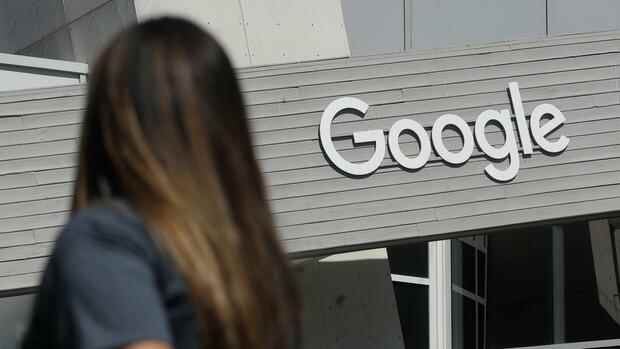The group invests enormous resources in artificial intelligence.
(Photo: AP)
San Francisco Google wants to revolutionize its search engine with a new AI technology and answer questions with as much context as only humans can until now. At an event from the company headquarters in Mountain View, Google presented specific applications for the Multitask Unified Model (MUM).
MUM should be able to understand and interpret information from different data formats such as text, images or sounds together – hence the name Multitask. As an example, Google’s Senior Vice President Prabhakar Raghavan showed a colleague in a floral shirt. So far, he has been able to take pictures of the shirt with the lens function in the Google app and display similar shirts; because the similarity is purely optical, it is limited to the medium of the image. There is no need to multitask.
If he wants to buy socks in the same style, the search has to be able to think more abstractly. It will soon be possible to combine text and image searches in such a way that socks with the same “Victorian floral pattern” can be searched for with one query. The same technology will also make it possible to photograph a broken part on the bike and to receive the link to the point in a repair video where exactly this part is being repaired.
Artificial intelligence is also changing outside of Google from pure pattern recognition in mountains of data to a discipline with many senses: OpenAI, the AI startup from San Francisco supported by Elon Musk and Microsoft, astonished the world a few months ago with GPT-3.
Top jobs of the day
Find the best jobs now and
be notified by email.
The speech generation model had been trained so well with the enormous amounts of text on the Internet that it could provide understandable and often meaningful answers to all kinds of questions. Shortly afterwards, OpenAI published Codex – the sister of GPT-3, so to speak – which can produce computer codes instead of text.
Photos, Google Maps and YouTube work together
However, Google does not want to be outdone by startups when it comes to AI applications. The group is more focused on the further development of AI than probably any other large company in the world.
With the combination of its successful, constantly collecting data, Google’s advantage lies: The company has nine services with more than a billion users worldwide. Many such as Google Photos, Google Search, YouTube or Maps work together at MUM.
Google earns a large part of its sales with online advertising, which is switched around search results. Amazon is also pushing harder into this business and is recruiting retailers who can advertise willing buyers more specifically on the side of its trading platform than on Google, where many users are more like the “just look” pass-through customers of a physical store.
In April, Google abolished the fees in its shopping function in order to undercut Amazon and is offering merchants a delivery service in partnership with Shopify.
With MUM, Google users should now not only be able to take pictures of clothes and shop on the Internet as before. You should also see stores in Google Maps where you can try and buy the product in person.
More: Australian antitrust authorities target Google’s advertising business
